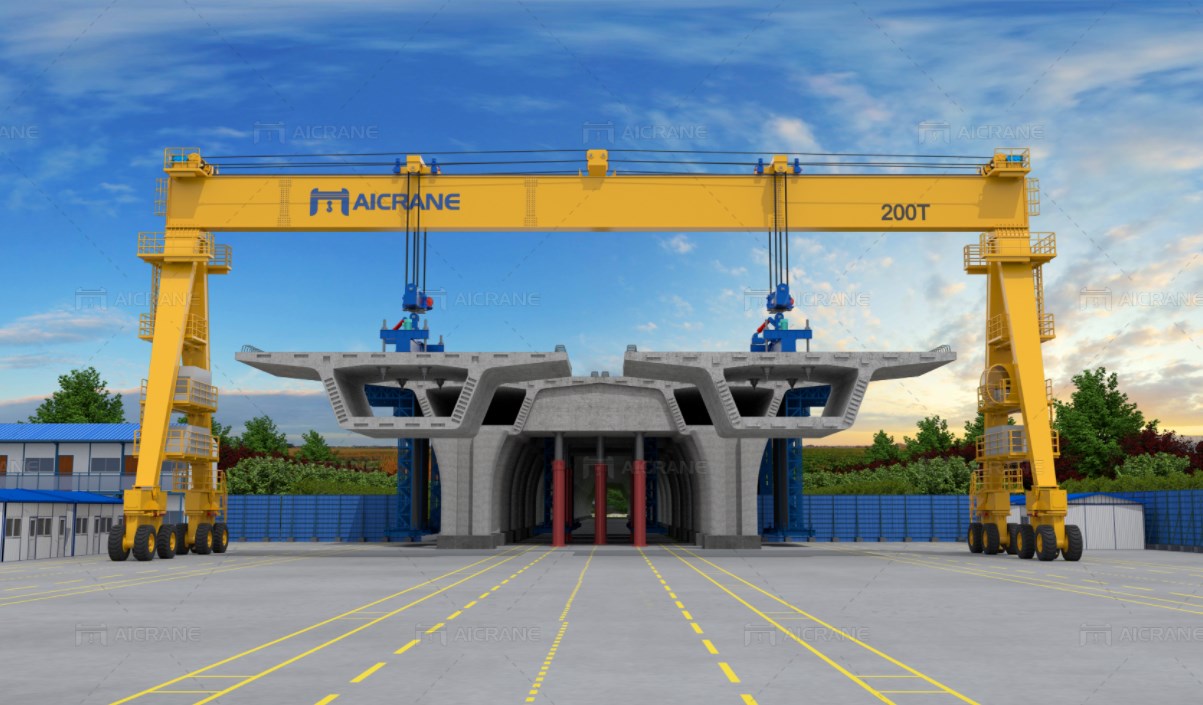Exploring the Diverse Types of Cranes in Bridge Construction
Bridge construction is a complex and challenging process that requires precision and efficiency. One crucial element in this process is the use of various types of cranes, each serving a specific purpose to ensure the successful completion of the project. In this article, we will delve into three essential types of cranes used in bridge construction: rubber tyred gantry cranes, launching gantry cranes, and their unique roles in shaping the skyline.
Rubber Tyred Gantry Cranes:
Rubber tyred gantry cranes, commonly known as RTGs, play a pivotal role in the construction of bridges, especially in the handling and movement of materials within construction sites. These cranes are equipped with rubber tires, providing them with the flexibility to move smoothly on various surfaces, including rough terrains.
Key Features of RTGs:
Mobility: The rubber tires enable RTGs to move easily across the construction site, making them versatile and adaptable to different working conditions.
Lifting Capacity: RTGs are designed to handle heavy loads efficiently, contributing to the swift progression of bridge construction projects.
Precise Control: Advanced control systems in RTGs ensure precise and controlled movements, allowing for accurate placement of materials.
Applications in Bridge Construction:
RTGs are commonly used for tasks such as transporting precast concrete segments, steel beams, and other construction materials to their designated locations. Their ability to navigate uneven terrains makes them invaluable during the early stages of bridge construction when the landscape may not be fully developed.
Launching Gantry Cranes:
Launching gantry cranes are another essential component in bridge construction, particularly in the erection of precast segments and the construction of elevated structures. These cranes are designed to move along the bridge's length, facilitating the assembly of segments in a systematic and efficient manner.
Key Features of Launching Gantry Cranes:
Longitudinal Movement: Launching gantry cranes are equipped with mechanisms that allow them to move longitudinally along the bridge, ensuring seamless assembly of segments.
Precise Positioning: The cranes are designed with precision in mind, allowing for accurate placement of precast segments, which is crucial for the structural integrity of the bridge.
High Lifting Capacity: Launching gantry cranes are capable of lifting and placing heavy precast segments at considerable heights, contributing to the efficient construction of elevated structures.
Applications in Bridge Construction:
Launching gantry cranes are commonly used during the construction of bridges with precast segmental spans. They play a vital role in placing these segments in their designated positions, ensuring the bridge's structural stability and integrity.
Conclusion:
In conclusion, the use of rubber tyred gantry cranes and launching gantry cranes in bridge construction is indispensable. RTGs contribute to the efficient movement of materials across construction sites, while launching gantry cranes play a crucial role in the assembly of precast segments and the construction of elevated structures. The synergy between these types of cranes ensures that bridge construction projects are executed with precision, speed, and safety, ultimately shaping the landscape and connecting communities.



Comments
Post a Comment